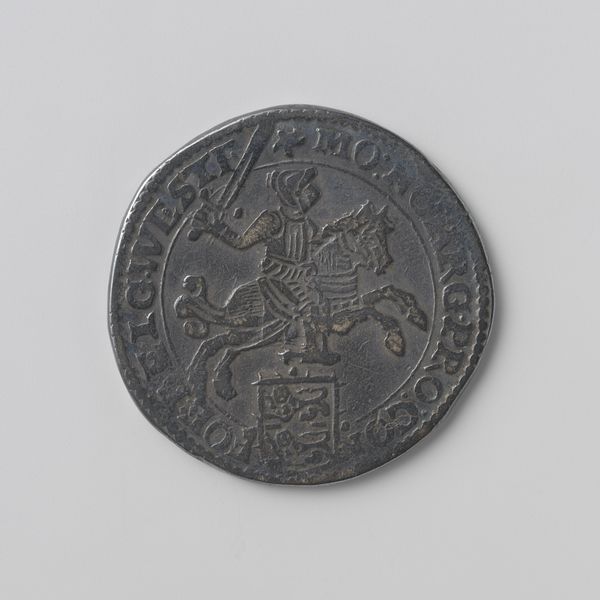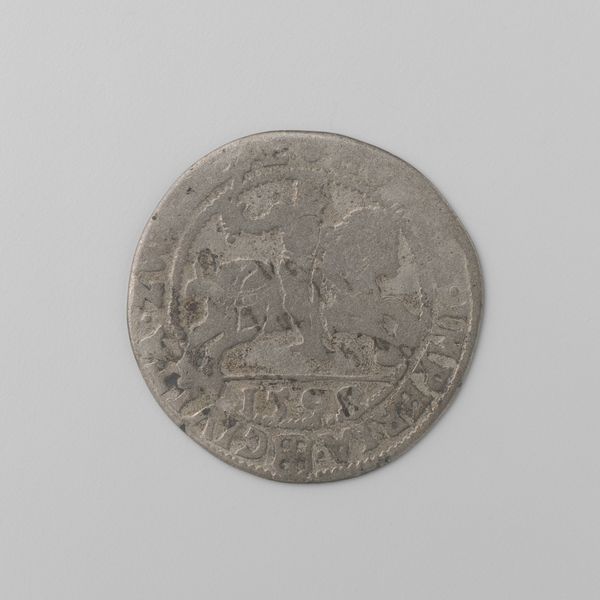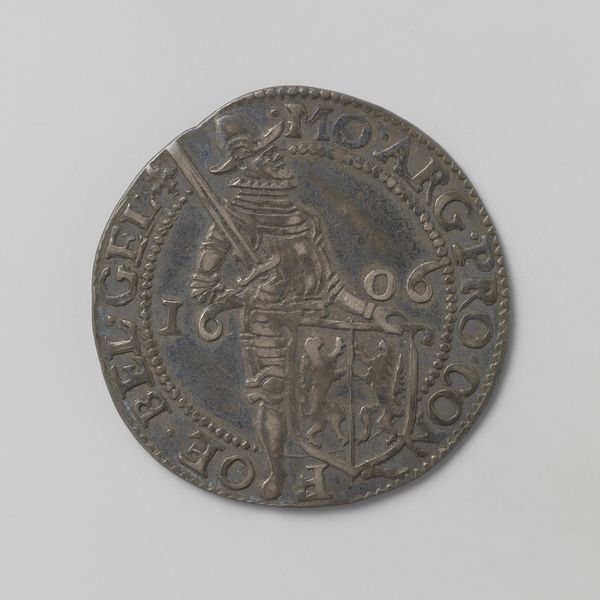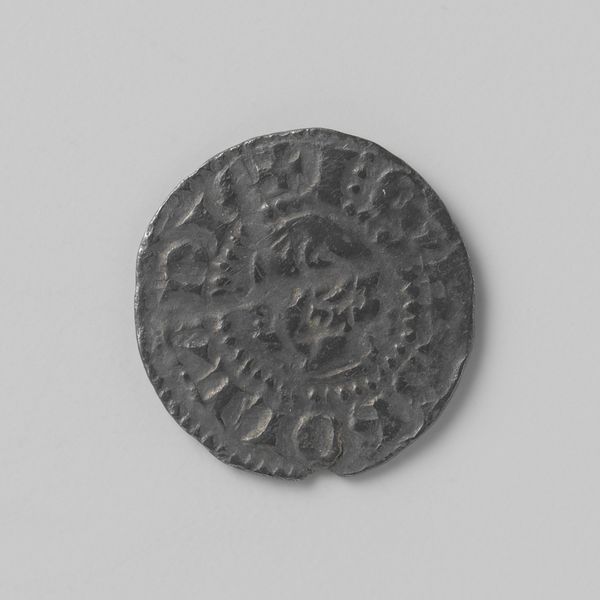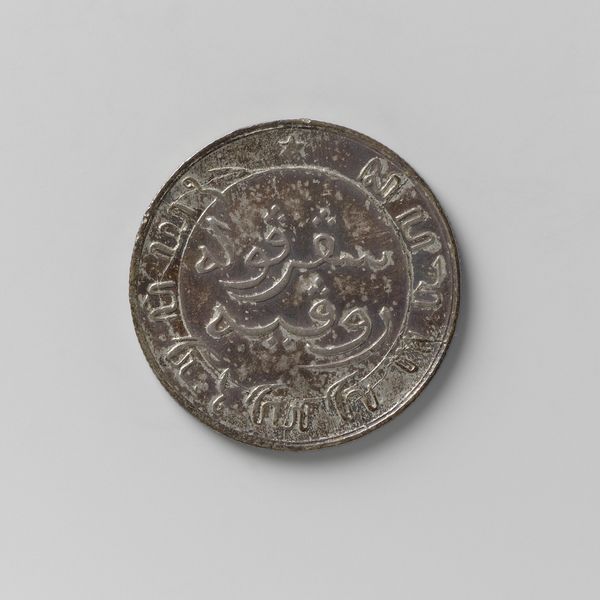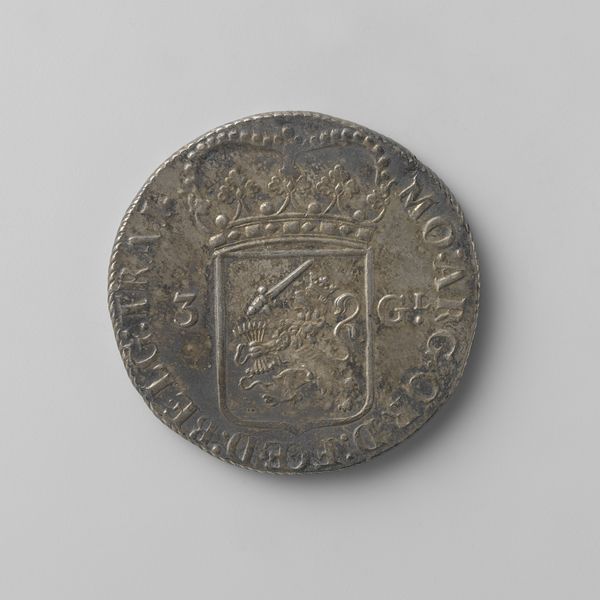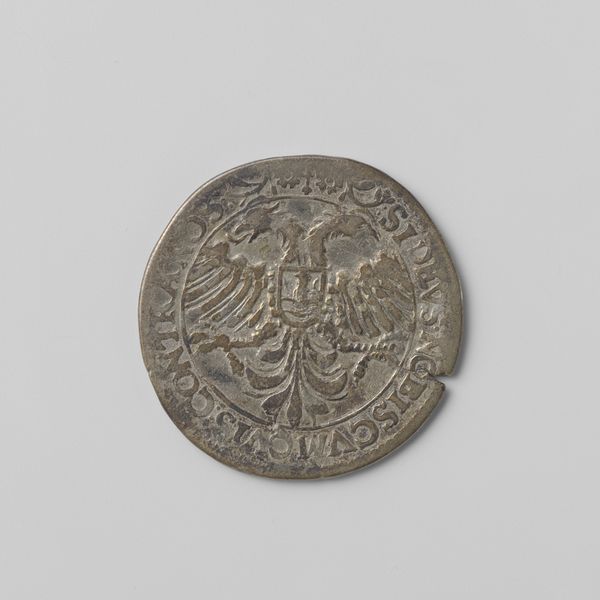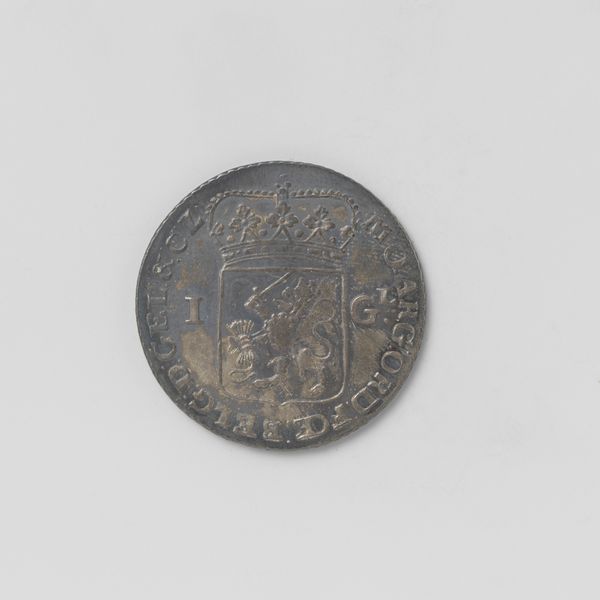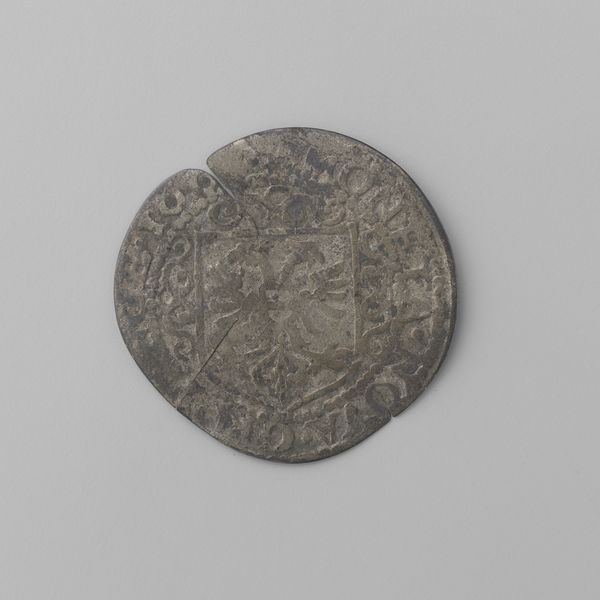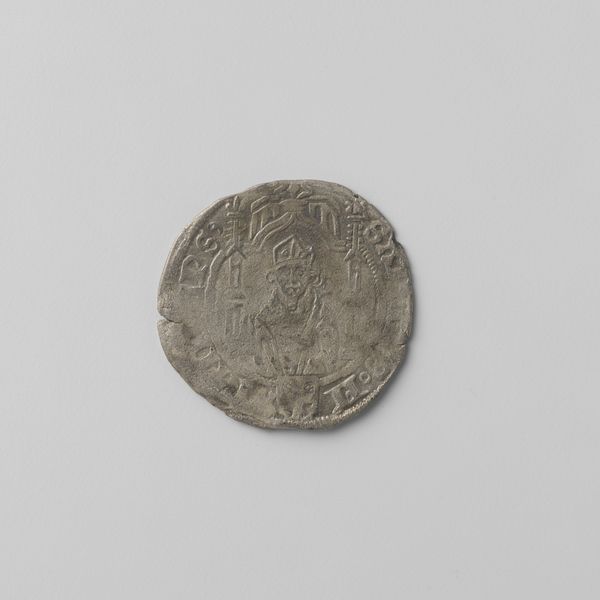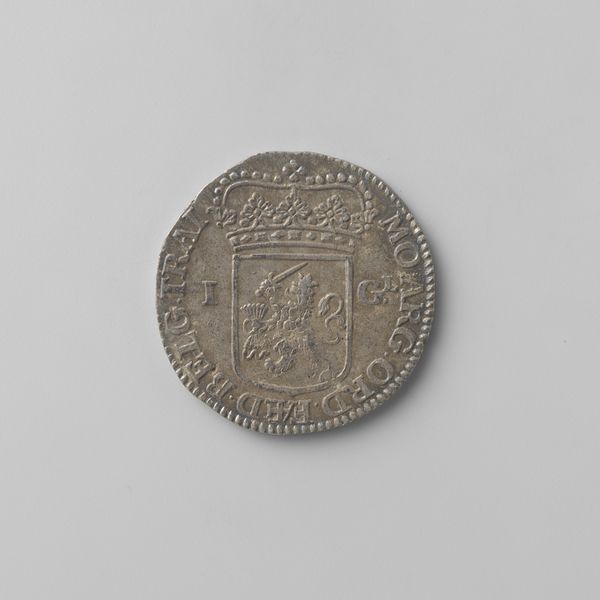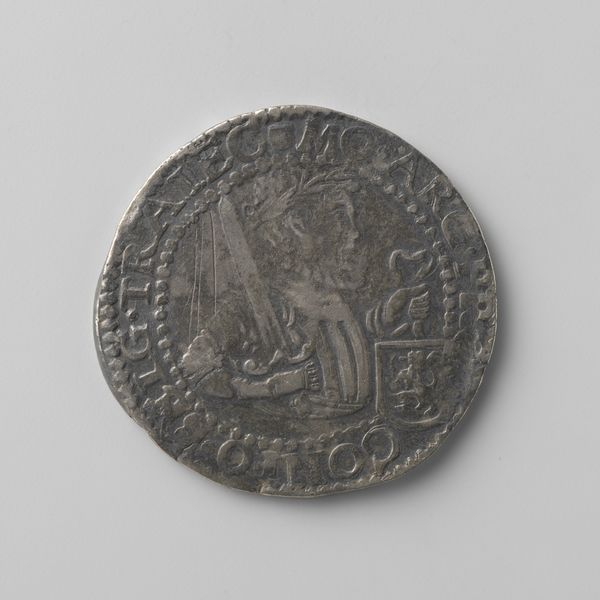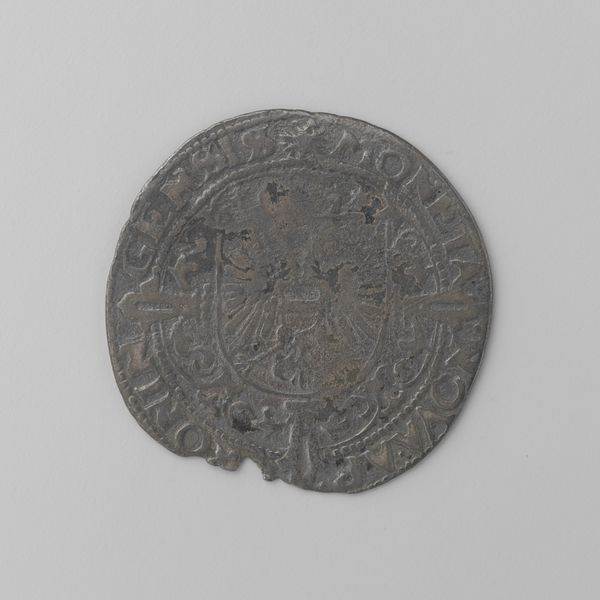
Dimensions: diameter 3.6 cm, weight 16.27 gr
Copyright: Rijks Museum: Open Domain
Editor: So, this is the Utrechtse halve zilveren rijder from 1793, made of metal. It looks like a coin or medallion with a knight on horseback. It’s fascinating how they could get so much detail on such a small object! What strikes you about this piece? Curator: What immediately grabs my attention is the interplay between material and message. We have this rather base metal being used to project an image of power and authority. Think about the labour involved in its production - the mining, the smelting, the striking of the coin. Who were the people actually producing this symbol of wealth, and under what conditions? Editor: That’s a great point! We’re so used to thinking of coins as just currency, we forget the whole industrial process behind it. Curator: Exactly! And consider the social context. 1793…the French Revolution is in full swing. How does this image of a mounted warrior relate to the anxieties of the Dutch Republic at this time? Was this, in essence, a form of propaganda, designed to bolster morale? What was the purchasing power of this coin, and who actually handled it? Was it circulating amongst the common people or held by the elites? Editor: So, instead of just seeing a historical portrait, you're focusing on its role as a product of its time, shaped by both its materiality and the social forces at play. It’s interesting how the value of the coin goes beyond its monetary worth to its political function and the labour involved. Curator: Precisely! We move beyond aesthetics to understand the socio-economic relations embedded within the object itself. How it's made informs what it represents. Editor: I never thought of analyzing art this way. Thanks for shedding light on this, it changes everything I thought I knew about the coin. Curator: That's great! Understanding the work behind art enhances its significance.
Comments
No comments
Be the first to comment and join the conversation on the ultimate creative platform.
